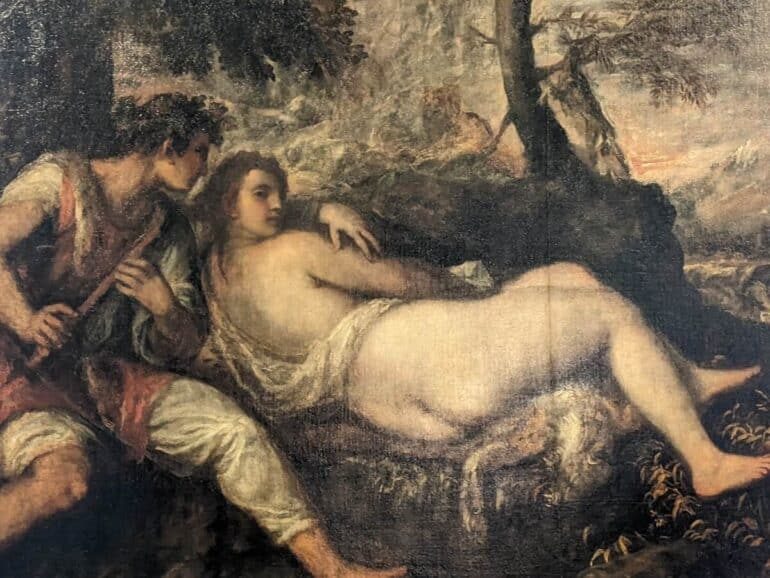An exhibition – dossier on Titian’s journey around the themes of Nature and Love
This summer, there is even more reason to get lost in the wonders of Borghese Gallery. From the 14 June, visitors can admire one of the latest works from Tiziano Vecellio, Nymph and Shepherd, which has arrived in Rome as part of an exchange programme between museums.
The magnificent oil painting comes from the Kunsthistorisches Museum of Vienna and, until 18 September, it will be on display on the first floor of the Gallery together with other masterpieces of the Venetian painter. The temporary addition of the Nymph and Shepherd has stimulated a reflection on Titian’s works through the years and visitors are invited to take a journey on a thematic path that witnesses nature and love as the main protagonists.
The curator, Maria Giovanna Sarti, speaks of a “dossier exhibition”; a small review that highlights the connection between Titian’s paintings and some recurrent themes.

The Psyche Hall at Galleria Borghese hosts several works of Titian, including the masterpiece Sacred and Profane Love (1514) and Venus Blindfolding Cupid (1565): two paintings centred around the theme of marriage. Opposite to Nymph and Shepherd, there is on display a prestigious copy of The Three Ages of Man by Giovan Battista Salvi known as Sassoferrato (1682).
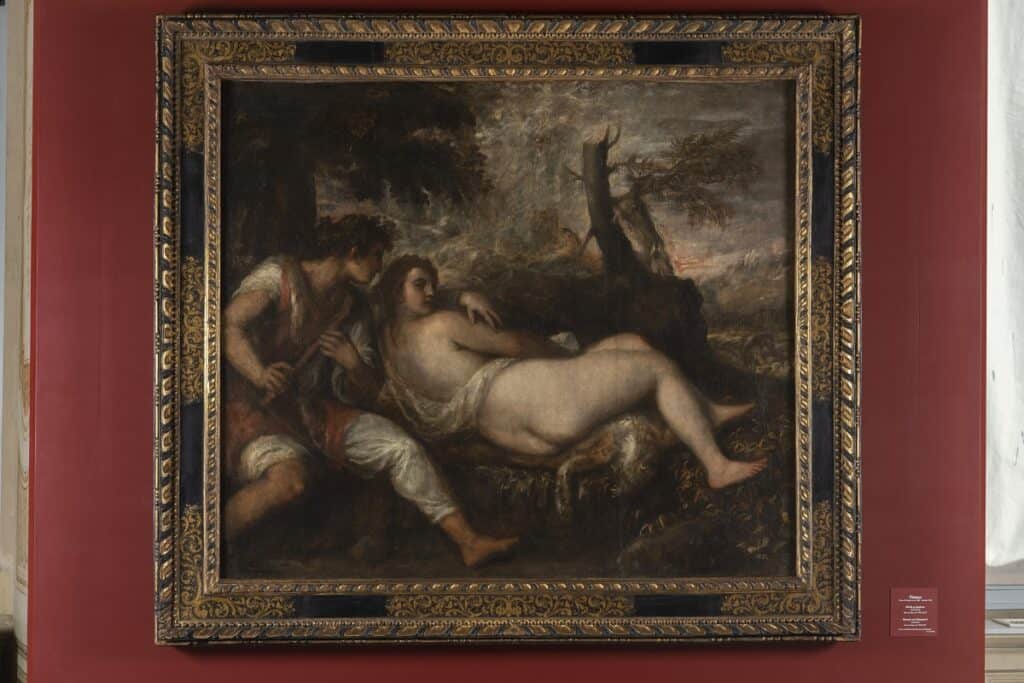
Nature as an indication of the internal landscape
Whether it is luxurious, idealized or somehow damaged, the landscapes of Titian serve to communicate the concept of the painting itself, as an extension of the inner dimension of the human characters portrayed in the canvas.
Exquisite naturalistic details emerge from the painting Sacred and Profane Love. The two female figures stand between little flowers on a green lawn. At a distance, a rural landscape completes the painting, relaying the idea of calm and beauty.
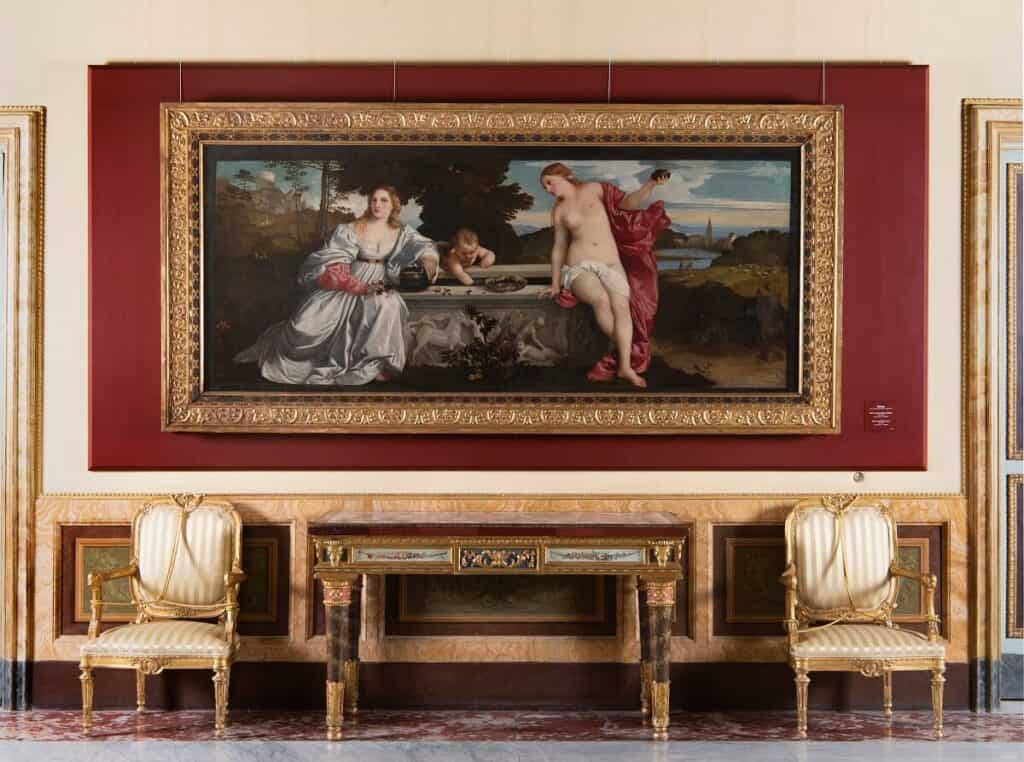
On the other side of the hall, the characters representing Nymph and the Shepherd are laying down on the earth soil surrounded by a vegetation which is deteriorating. A wild goat is stretching high to eat the last green branch of a tree. Titian’s brushes are intangible, suggesting the idea that Titian was often painting with his fingers in addition to the painting brushes.
A reference to Titian’s origins, the mountains of Pieve di Cadore, can be spotted in the right top corner in the Nymph and Shepherd– perhaps as a little sign of hope and lightness which appears again in Venus blindfolding Cupid.
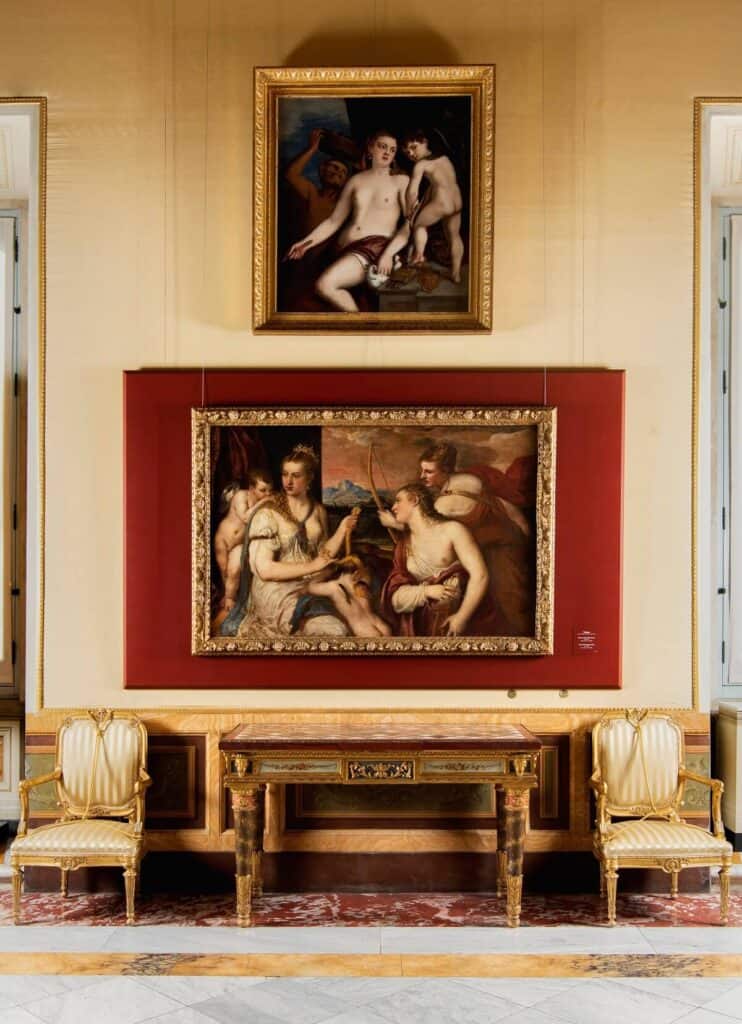
On the occasion of this exhibition, a catalogue whose texts are curated by Maria Giovanna Sarti, presents, as a preview, the results of scientific research made on Venus blindfolding Cupid. The technical studies highlighted that, in a composition highly populated by feminine characters, Titian chose to eliminate one of the figures placed between Venus and the woman who is suspended in the moment of taking the arrows from the cover.
The study conducted on the canvas revealed that, instead of a human figure, Titian added a mountain surrounded by a dusty pink sky right behind Venus.

The theme of love through time and allegories
Love is shown in Titian’s painting in its different forms: divine, as a nymph, and by a young girl or a bride. The most famous and glorious work is Sacred and Profane Love, but the theme of love can also be found in the copy of The Three Ages of Man, whose original is to be found in Edinburgh.
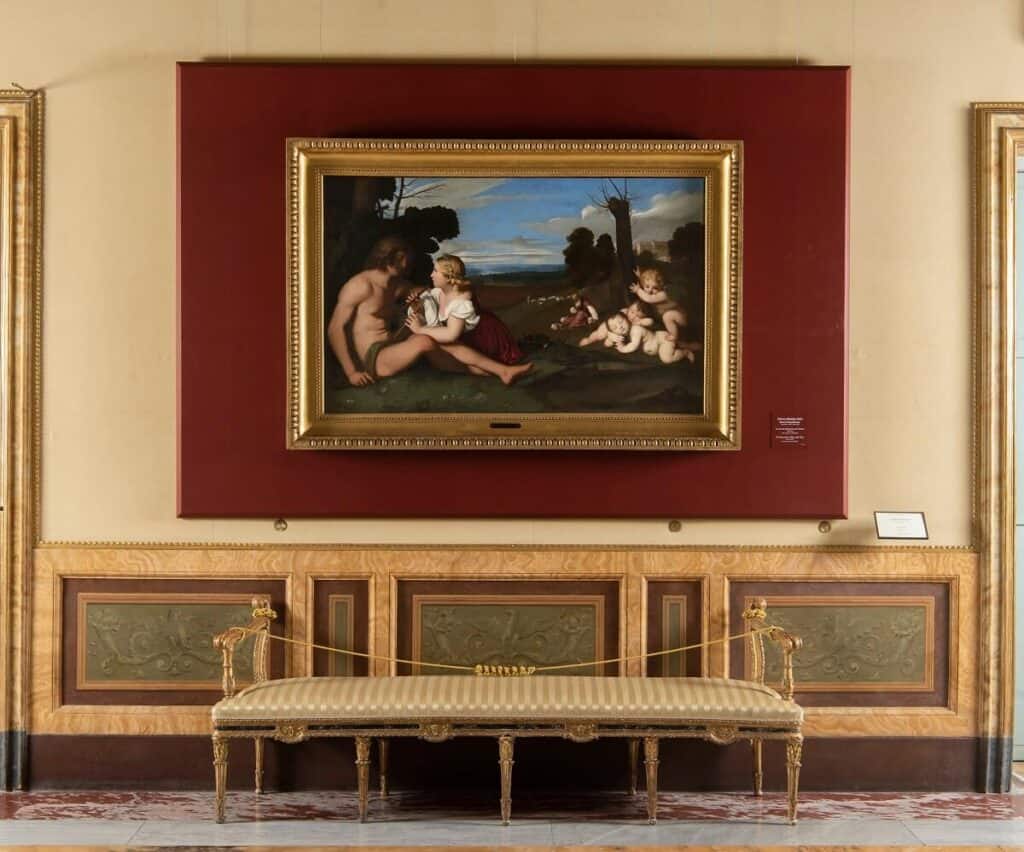
In The Three Ages of Man, the narration is built around feelings of love and passion. In the foreground, a young couple is enjoying a musical duet, tenderly looking into each other’s eyes. On the right corner, children are peacefully sleeping under the gaze of a little angelic figure. This painting represents the artist’s idea of the life cycle in allegorical terms. Childhood and manhood are synonymous with terrestrial love, and old age close to death are drawn realistically as each figure reflects Titian’s attitudes toward each stage of earthly existence in relation to love.
Until 18 September 2022
Galleria Borghese
Piazzale Scipione Borghese, 5
Visiting hours: Tuesday to Sunday: 9am to 7pm
Tickets: €13 (last entry for €8)


